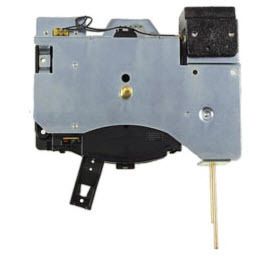Batteryclocks
Locating Clock Movements and also Motors for Display Timepieces
 Clock activities as well as electric motors are the profession and lay terms, respectively, for the engines that make modern-day wrist watches function. Making use of clock activities as well as motors to accomplish the exact attributes desired is eminently fulfilling as well as enjoyable. In this write-up, we concentrate on these mechanisms and the different components linked to them, such as dials, hands, chimes, and pendulums.
Clock activities as well as electric motors are the profession and lay terms, respectively, for the engines that make modern-day wrist watches function. Making use of clock activities as well as motors to accomplish the exact attributes desired is eminently fulfilling as well as enjoyable. In this write-up, we concentrate on these mechanisms and the different components linked to them, such as dials, hands, chimes, and pendulums.
Clock activities (or motors) resemble black boxes with a single projection of concentric shafts that are enabled to rotate independent of each other. Each hand (hr, min, and 2nd) connects to its very own shaft. The movement calculates the rapid angle of turning for each shaft.
Nowadays these calculations are done online, but originally they were derived mechanically. A heavy weight or a securely curled springtime used torque to the key equipment or flywheel, making it want to turn in a certain direction. A calibrated pendulum, operating in tandem with an escapement device, developed the quantity of turn at the proper tempo (not unlike a metronome).
The modern-day electronic technique has actually replaced the flywheel-pendulum-escapement mix with a collection of pulses created by a quartz crystal. The frequency of these pulses is reliably accurate, and also their sum is gathered right into a computer register. When the matter crosses numerous limits, several of the electric motor shafts are turned accordingly.
The essential purpose of the clock activity is to tell time in the basic format, that of hr, minutes, as well as seconds in a 12-hour cycle. Yet there are variations that reveal either added things or different points. The added things are temporal extensions (longer cycles) or weather condition sensations, and if you exclude the moment aspect altogether the clock electric motor is changed with a weather condition electric motor.
When clock movements track supporting temporal data, changed, calibrated dials, as well as perhaps additional hands, are usually required. For instance, mosting likely to a 24-hour cycle increases the variety of figures standing for hrs. Moreover, the hr hand needs to move at half the rate (unless the hrs are doubled up, where situation the initial rate is used).
Also much longer expansions call for motions the control 4 spindles, entailing a 4th hand. An once a week cycle calls for 7 labels published on the clock face to identify the day of the week. A regular monthly cycle demands additional numbers to fill out a 31-day calendar month.
All clock motors have a second's shaft, yet not every clockmaker employs useds. If they are utilized, they could relocate a couple of means. One is a move second hand removaling constantly and also calmly, whereas the various other means is a jerky, ticking movement, either distinct or inaudible.
As one checks out movements that provide time extensions as well as have higher abilities, she finds the foundation for really showcase clocks. This is particularly true when electronic and cordless innovation is incorporated into them.
For instance, you could wish to make a clock that immediately changes for daylight saving time to spare the owner the semiannual aggravation of re-syncing the moment. This is a worthwhile need, but you do not desire a hardwired service lest Congress fiddle again with the daylight financial savings days. Rather, utilize a digital clock electric motor that wirelessly fetches the Colorado atomic clock requirement and also syncs to it.
Digital clocks likewise do a better work of showing specific weather phenomena such as temperature level, moisture, as well as barometric pressure. Sensing units check out these and report the worth, which is easily mapped into a number on a screen. Contrarily, an analog temperature level motion should be coupled with a calibrated dial and hand, and it cannot really be integrated with temporal data.
Nonetheless, a helpful information that is both climate related and time associated is the level of the tide. Analog electric motors are well equipped to manage this since the adding variables are lunar and solar placements, both of which are intermittent. With some first calibrations to make up local conditions, you could utilize such a motor to create a timepiece truly worth showcasing.
Some clockmakers accomplish showcase pieces by making them really large, perhaps taking up a whole wall. If this attract you, know that big hands are heavy as well as require added torque to move them. All the other features can stay the very same, yet you have to purchase a high torque movement.
Do not focus so difficult on the visual aspects that you ignore making use of sound. Most of the older grandfather clocks and mantle clocks showcased special chime patterns (e.g., Winchester, Westminster, St. Mary). The grandest showcase clock of all, Big Ben, has this feature.
You as well could incorporate special clock parts into your works that provide aural cues sounding on the quarter hr with a following hour matter whenever the minute hand reaches twelve. Try to find chiming clock activities and also assess which features you want, such as particular patterns, automatic disabling at night, or a method to tape-record your own chimes.
Adding pendulums is one more method to have your work stand apart. These no longer contribute to timekeeping as well as are strictly cosmetic, yet lots of people discover them attractive. Whatever features you really feel will certainly produce display timepieces can be accomplished just by discovering the suitable clock activities and also electric motors.

